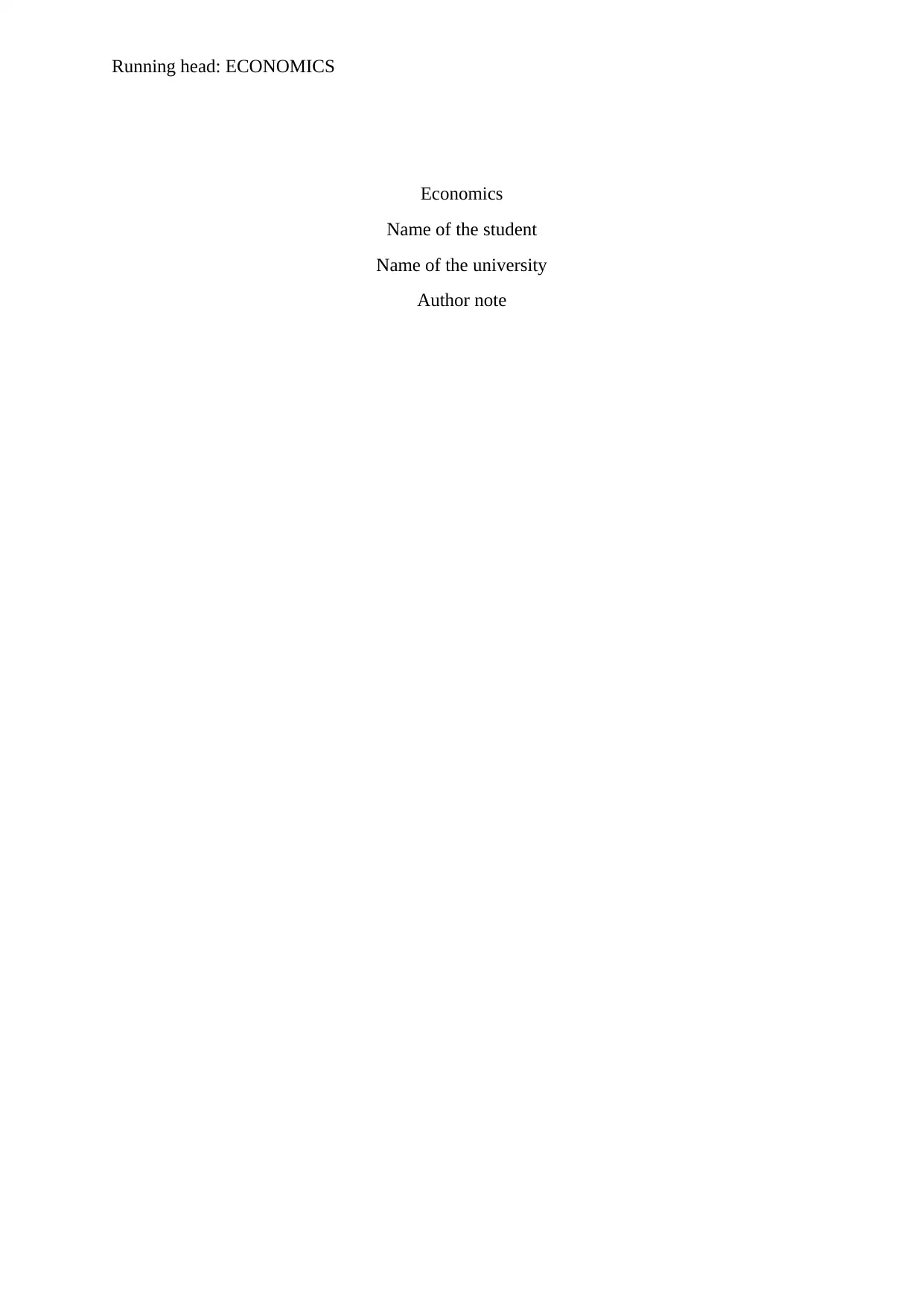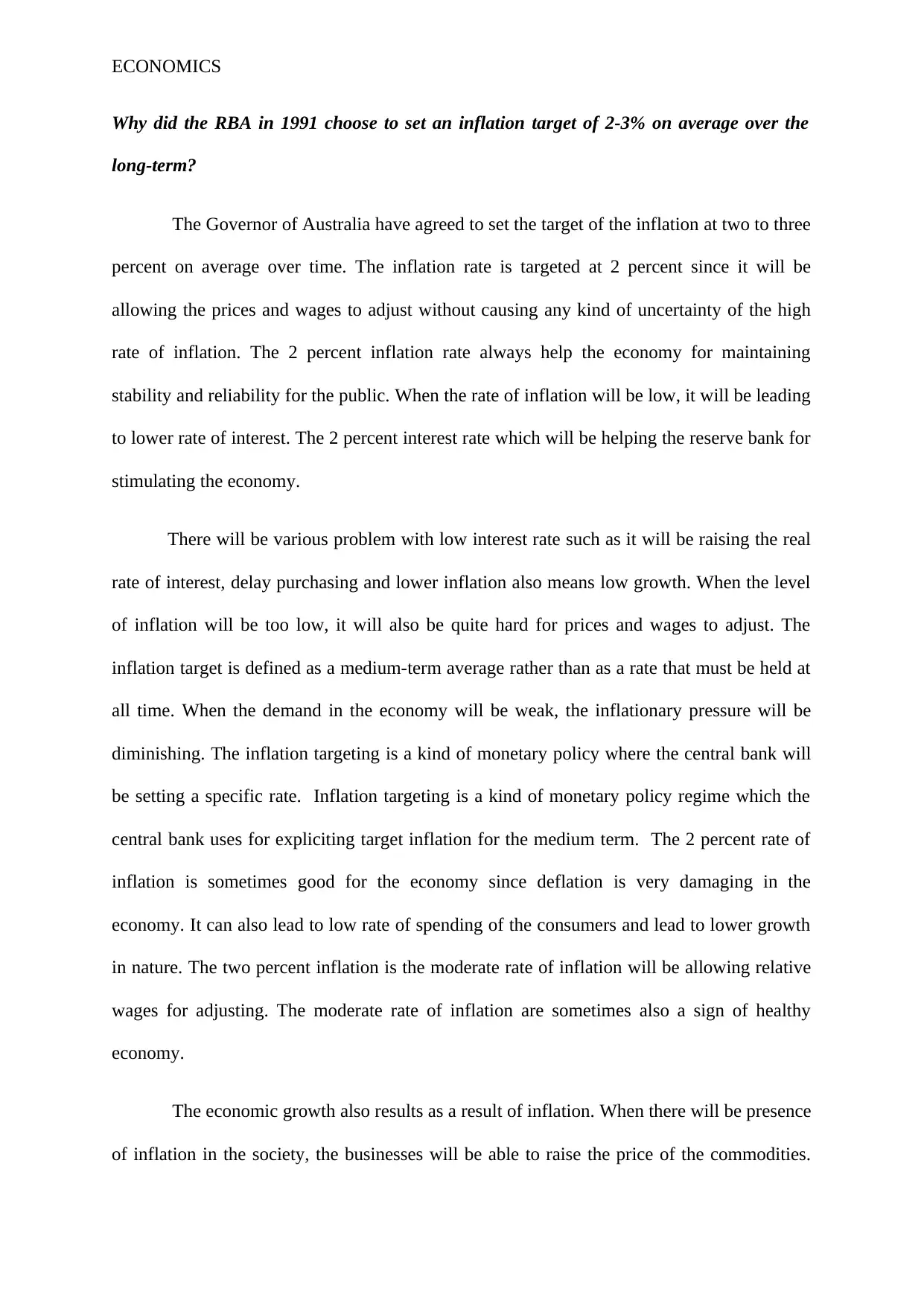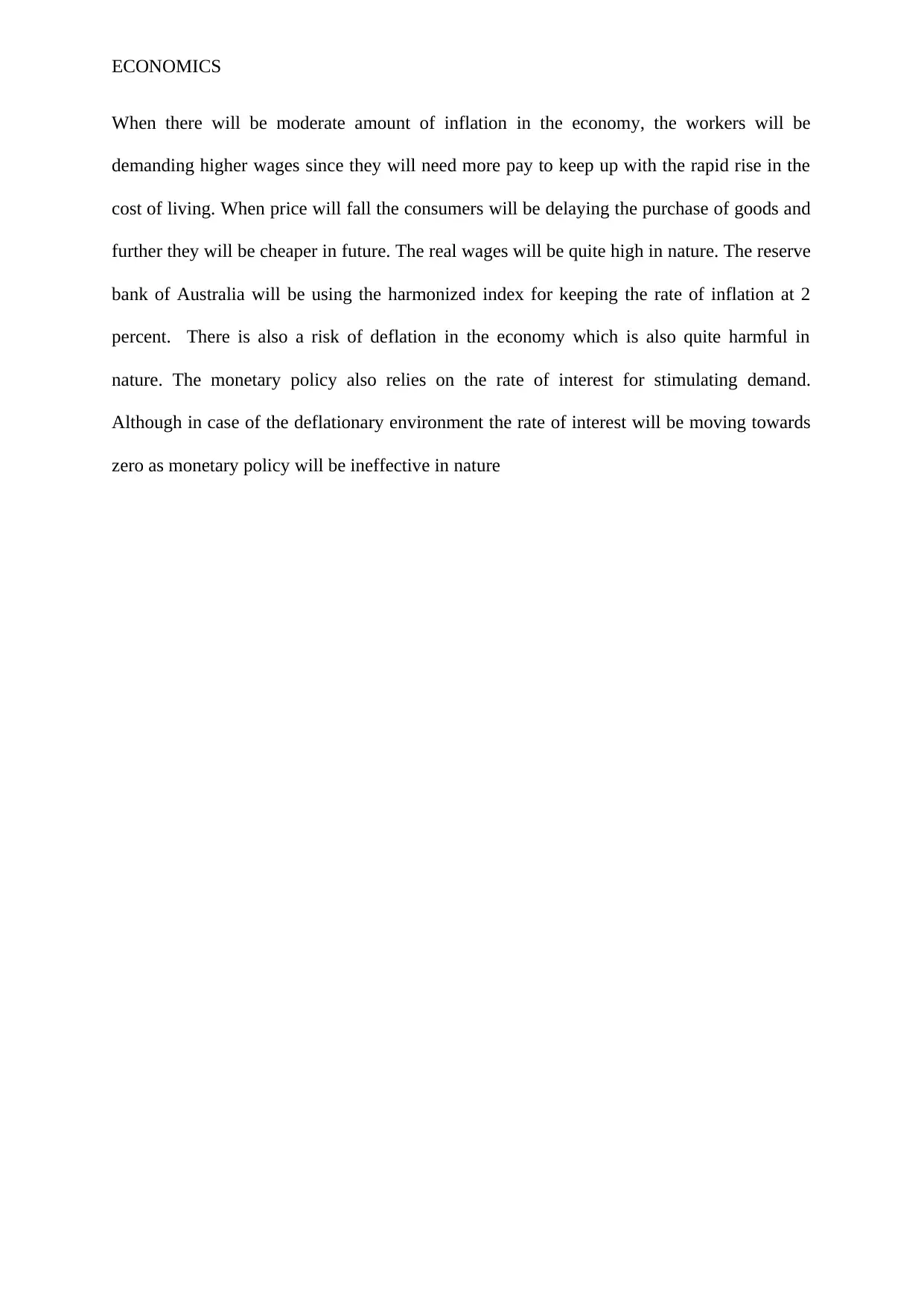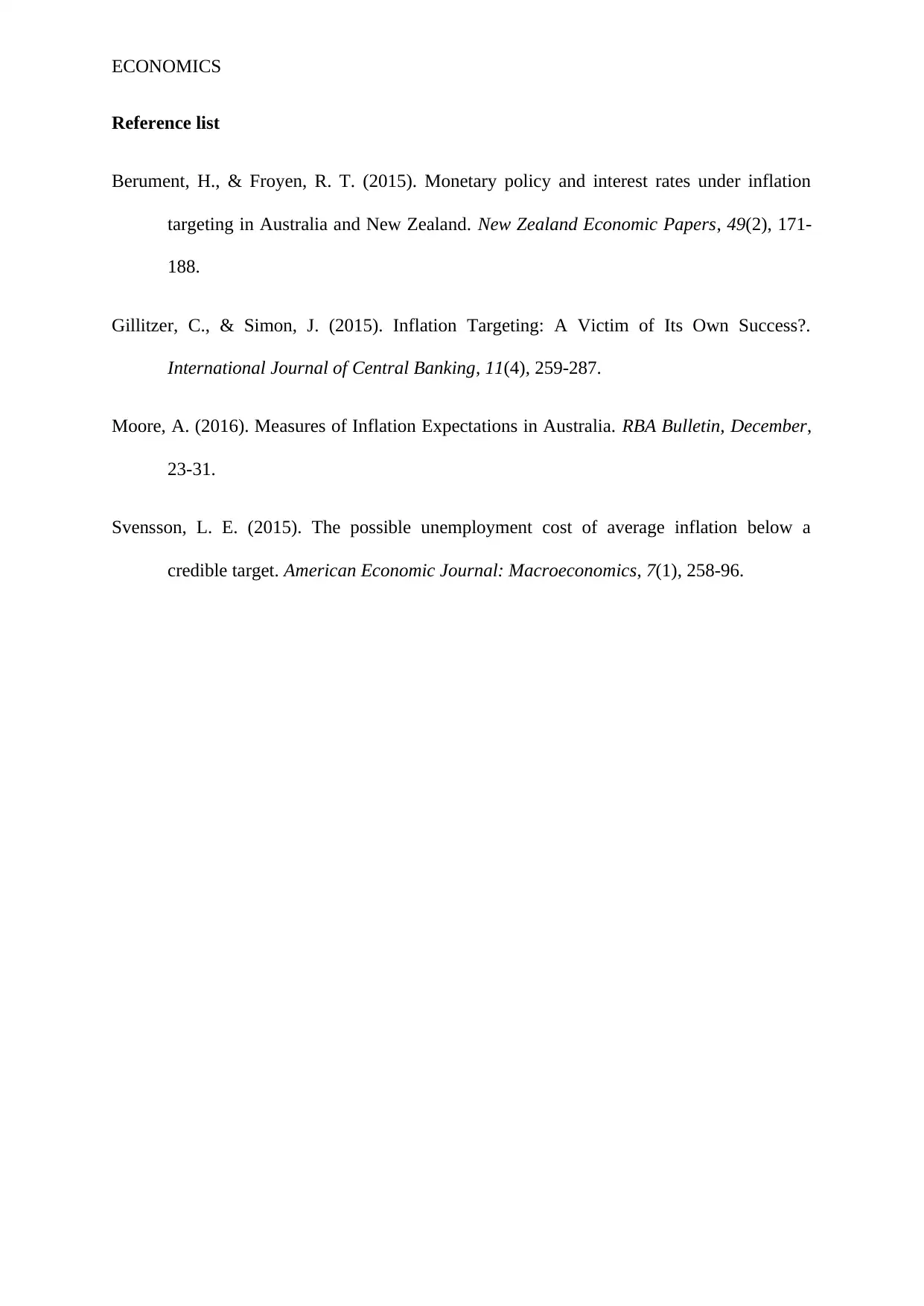Detailed Analysis: RBA's Inflation Target of 2-3% in 1991
VerifiedAdded on 2023/04/26
|4
|672
|152
Essay
AI Summary
This essay delves into the rationale behind the Reserve Bank of Australia's (RBA) decision in 1991 to establish an inflation target of 2-3% on average over the long term. It explains that the target aimed to allow price and wage adjustments without high inflation uncertainty, promoting economic stability. The essay discusses the benefits of a 2% inflation rate, such as lower interest rates and stimulating the economy, while also addressing potential issues like raising real interest rates and delaying consumer purchases. It highlights that the inflation target is a medium-term average, acknowledging diminishing inflationary pressure during weak economic demand. The essay further explores the advantages of a moderate inflation rate, including facilitating wage adjustments and fostering economic growth, while also cautioning against the risks of deflation and the limitations of monetary policy in such environments. References to relevant academic sources support the analysis.
1 out of 4











![[object Object]](/_next/static/media/star-bottom.7253800d.svg)